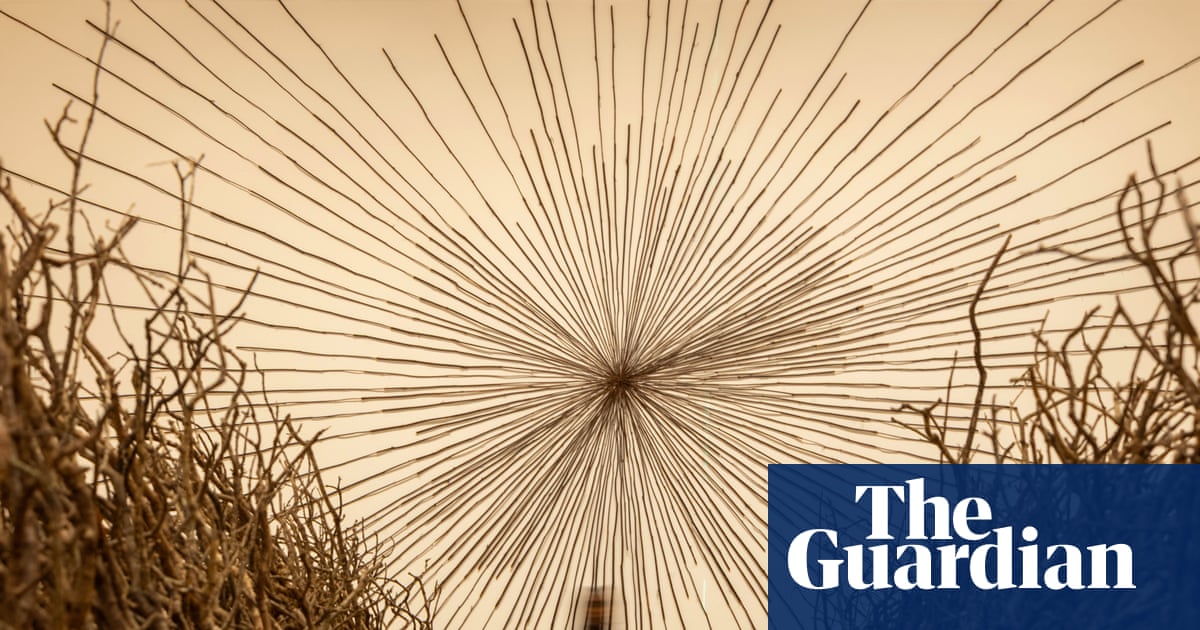From bagpipes to borscht: exploring Edinburgh’s Ukrainian heritage on foot | Edinburgh holidays
Before arriving in Edinburgh, Nataliya Bezborodova’s impression of Scotland was shaped largely by Hollywood. “My knowledge of this country was pretty much based on the film Braveheart,” she admits with a laugh, standing before the grand neoclassical columns of the National Galleries of Scotland. As if on cue, the castle’s daily gun salute fires overhead, scattering pigeons and punctuating our conversation with a jolt.
Three years have passed since the 47-year-old anthropologist left her home in Kyiv for Edinburgh, after the Russian invasion. Celluloid warriors have long been replaced by the rhythms of life in a city she now knows like the back of her hand. So well, in fact, that she has launched a walking tour revealing a layer even locals might miss: the story of Edinburgh’s vibrant Ukrainian community.
Bridges Across Borders: Tracing Ukrainian Roots in the Heart of Edinburgh started in June and is the latest in a growing portfolio of women-led immersive walks developed in partnership with Women in Travel CIC, the UK-based social enterprise that fosters gender inclusion in the tourism industry. It now offers seven tours celebrating multiculturalism in its many forms: from a Saudi-led deep dive into west London’s Edgware Road to a sensory stroll along Ealing Road in Wembley, north-west London, with its Hindu temples and sizzling street food. All tour leaders are trained through Women in Travel’s guiding academy, which aims to help women earn an income by sharing their stories with travellers seeking a deeper connection to a place.
The two-and-a-half-hour walking tour attracts a mix of locals and tourists, Nataliya tells me. “I’ve even had people from Ukraine join the group, who had no idea about our shared heritage with Scotland,” she says, as we stroll along Princes Street, the city’s main artery.
Scotland’s Ukrainian population has grown since the full-scale Russian invasion of Ukraine began in 2022, with about 5,000 refugees arriving via Edinburgh. But, as Nataliya points out, the ties go back centuries. Dominating the horizon, the crenellated outline of Edinburgh Castle looms large. It houses St Margaret’s Chapel, built in the 12th century and named after a queen thought to be a quarter Ukrainian. Edinburgh and Kyiv were also formally twinned in 1989, Nataliya adds. We pass the Scott Monument, its blackened gothic spires piercing the sky. At its base, a kilted busker skirls a haunting tune on the bagpipes.
We are soon puffing our way up and down the leafy slopes of Calton Hill, pausing first at a plaque to Saint Wolodymyr – who helped bring Christianity to Ukraine more than a thousand years ago – and then at the Holodomor memorial stone honouring the seven million Ukrainians who died in the forced famine of 1932-33. “It’s a reminder that these things must never happen again,” Nataliya reflects.
A short walk away lies Royal Terrace, on the eastern edge of New Town, a handsome Georgian sweep of sandstone townhouses by the Scottish architect William Henry Playfair. Tucked between swish boutique hotels and stately homes, blue-and-yellow flags flutter at the Ukrainian community centre.
Inside, a plate of homemade potato dumplings, cooked by the centre’s summer camp children and topped with a dollop of sour cream, awaits. As we tuck in, Nataliya explains how the arrival of recent refugees has rekindled pride among Edinburgh’s older Ukrainian diaspora, whose first major wave came in the 1940s: “The newcomers helped them reconnect with a culture that had gone underground.” Today, the centre hosts coffee mornings, cookery classes and language lessons for the Ukrainian community, alongside a rolling programme of concerts and film screenings open to all.
Back out on the street, trams rumble by as we head west, passing familiar landmarks, including a bronze Sherlock Holmes, keeping watch at Picardy Place in tribute to his creator, Sir Arthur Conan Doyle, born just around the corner. In the shadow of the redbrick Scottish National Portrait Gallery lies our final stop: the Square, a Ukrainian-owned cafe that opened in 2023.
This modest slip of a building, with its slate-grey facade and plant-fringed window, is easy enough to miss. Inside, though, it’s quietly pioneering: the first place in the city to serve both Scottish and Ukrainian staples (though not on the same plate). The full Scottish breakfast – haggis, tatties and all – sits alongside Ukrainian classics such as holubtsi (cabbage rolls stuffed with lightly spiced meat).
after newsletter promotion
The owners, Ievgen and Valentyna Loievska, arrived in Edinburgh from the southern Ukrainian city of Mykolaiv in 2022. “The cafe was our way of bridging cultures and bringing people together,” Ievgen tells me. Within minutes of sitting down, the table groans under bowls of steaming borscht, plates piled high with dumplings, and deruny (crisp golden potato pancakes drenched in parmesan sauce). Just as I think I can’t manage another bite, out comes the grand finale: syrnyky – sweet curd-cheese pancakes swimming in velvety berry juice – as Nataliya shares what creating the tour has meant to her personally.
“Putting the tour together made me realise just how many Ukrainian landmarks are hidden across this city,” Nataliya says. “It’s about finding connections between seemingly distant cultures.”
As we wrap up, I’m handed a doggy bag for the journey home, a gesture that feels more like leaving a favourite grandma’s kitchen than ending a walking tour. An experience that initially seemed a little leftfield now makes perfect sense within the context of this city, I realise. In a place steeped in storytelling, Nataliya’s tour adds a fresh chapter to Edinburgh’s ever-evolving narrative.
Women in Travel’s Bridges Across Borders: Tracing Ukrainian Roots in the Heart of Edinburgh tour runs every Wednesday at midday and costs £58pp, including a taster plate at the Square cafe. Created with the support of Visit Scotland

